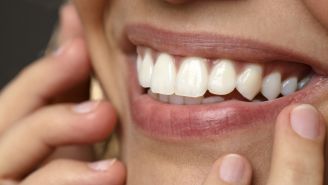“A chronic infection leads to chronic inflammation and an immune system that’s in overdrive all the time,” says Nancy Newhouse, DDS, MS, a board-certified periodontist, clinical assistant professor at the University of Missouri, Kansas City, and President of the American Academy of Periodontists. Eventually, your immune system will break down the bone and connective tissue that holds your teeth in place—and your teeth may become loose and have to be removed.
Are You At Risk for Gum Disease?
While poor oral hygiene is a prime cause of gum disease, there are other risk factors, too, including smoking and diabetes, and a genetic tendency toward gum disease. Interestingly, there is also a link between gum disease and heart disease, pancreatic cancer, erectile dysfunction and osteoporosis. The reason? The bacteria associated with gum disease can travel into your bloodstream, affecting other parts of your body. Hormonal changes can also trigger gingivitis, as can medications that reduce the flow of saliva, which protects against bacteria.
Watch Out for "Pink In Your Sink"
The first sign of gum trouble is red, swollen gums or gums that bleed after brushing—what Dr. Newhouse calls, “pink in the sink.” This stage, gingivitis, is reversible with improved dental care. That means brushing twice a day with a soft toothbrush, positioned at a 45-degree angle to dislodge bacteria from your teeth and gum line. Flossing is also important, but be sure to hold the floss in a “C” shape, so it curves around your tooth, and rub it up and down to scrape the plaque off the spaces between the teeth. “You need to create friction to remove plague, not just plop the floss inside to dislodge food particles,” says Dr. Newhouse. An interdental brush or proxy brush also works well.
Regular professional cleanings and exams are vital too. Each visit to your dentist should last about an hour and include a gum checkup. During your gum exam, your dentist or a dental hygienist will use a tiny ruler to measure the size of the pocket between your gum and each tooth, in increments of 1 to 12 millimeters. “A two or a three is healthy, and a four that doesn’t bleed is probably OK,” says Dr. Newhouse. “Much beyond that and the pocket is so deep that you can’t get under the gum line to remove the bacteria, and the soft tissue and bony attachment to the teeth will be eroded.”






